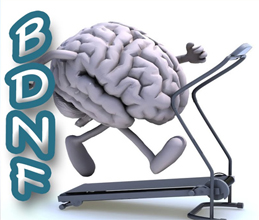Wednesday, 22 February 2017
To Retain Information Better, Wait a Few Hours, Then Go for a Run!

The study that I want to tell you about today was done by Eelco V. van Dongen and his colleagues and is entitled “Physical Exercise Performed Four Hours after Learning Improves Memory Retention and Increases Hippocampal Pattern Similarity during Retrieval.”
This study’s findings can be summed up as follows: if you have just made a new mental association and want to remember it better, wait a couple of hours, and then go do some exercise! In van Dongen’s study, three groups of subjects performed a memory-encoding task. One group performed exercise immediately after, one did so four hours after, and the third did not perform any exercise at all. When the three groups were tested for their retention of the encoded memory two days afterward, the group that had exercised four hours after the task showed the best retention among the three groups. (more…)
Memory and the Brain | No comments
Friday, 10 February 2017
You Don’t Catch a Ball by Calculating Its Trajectory, You Catch It by Moving

Today I’d like to talk about a problem that is a classic both for baseball players and for cognitive scientists. And the way that baseball players solve it has helped cognitive scientists to better understand the important role that the body plays in cognition.
The problem is as follows: how does a baseball player go about catching a baseball that has been hit high into the air, especially when the player is in centre field and the ball is following a long, parabolic trajectory that would otherwise cause it to land several metres from where the player is standing? How does the player go about calculating this trajectory and moving, in just a few seconds, to the right place to catch the ball? This is what has long been known in English as “the outfielder problem.” (If you’re more of a soccer fan, imagine a backfielder successfully heading a long throw-in by the goalkeeper.) (more…)
Body Movement and the Brain | No comments







